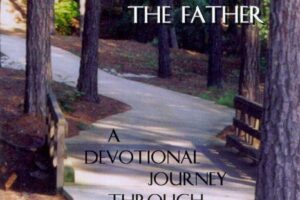When we were leaving the Cotton Museum, we saw some final pictures that encouraged us to explore more of Bishopville. James Davison Heriot was killed in action just 30 days before the end of WWI and posthumously received the Congressional Medal of Honor for his brave actions. He probably rode to the German front inside one of these 40 & 8 boxcars. The statue in the next picture visualizes him writing one of his last letters home before moving to the front trenches.

During WWI, French boxcars carried American Doughboys to the German front. These wartime boxcars could hold either 40 men or 8 horses so had a 40/8 on the side of the cars. This became a symbol understood by American veterans at that time.

In 1947 the people of France and Italy were still trying to recover from the devastation of WWII. An American journalist, Drew Pearson, started a fundraising campaign to provide them with food, clothing, and other necessities. This grass-roots effort resulted in filling the “American Friendship Train” with an estimated $40M ($566,213,452 today) in relief supplies.

France ran 10 trains throughout the country with items from the U.S. Every newspaper, except the Communists papers, told their story. Greece, Germany, Norway, and Austria each received a small amount of the foodstuffs.
The Italians sent a “Thank You” in the form of 4 statues that now are at both ends of the Theodore Roosevelt Memorial Bridge and the Arlington Memorial Bridge in Washington, DC.
The French came up with their own thank you. The plan was to have boxcars filled with gifts from every part of France. The response in each town and village was overwhelming.

In all, 52,000 gifts, weighing 250 tons, were collected in 1948 and loaded into 49 boxcars–one for each state in the U.S., and one for the District of Columbia and the territory of Hawaii.

These boxcars were loaded aboard the freighter Magellan at Le Havre, France, for their transatlantic journey. With Merci America printed along its sides, the ship received a royal welcome in New York Harbor on February 3, 1949.

One American wrote, “They gave so much from their little, while we gave so little from our abundance.”
Congress passed a resolution allowing the gifts to enter duty-free, and longshoremen volunteered their services to bring the cars ashore. Since the gauge on the French boxcars were too narrow for American rails, the boxcars were loaded onto flatcars for delivery by the nation’s railroads free of charge to state capitals across the country.
Few of the gifts can be found today, but some of the boxcars have survived. They testify to the friendship and caring between two nations and their peoples who fought side by side.

After lunch at “Harry and Harry Too” and walking around Pearl Fryar’s Topiary Garden, we drove through town and saw this display in one of the alleyways. Of course we stopped (and took pictures).
Memorial Park


Heriot’s citation

Of the 4 men with him, 2 were killed and 2 sought shelter from heavy fire. Heriot, with his fixed bayonet, charged 30 yards to the the machine gun nest and forced the enemy to surrender. Heriot received several wounds in the arm and later in the day, while charging another nest, was killed.


a Marine hero from SC
In this alleyway were the following plaques that honored James Capers, Jr., an African-American man born in in South Carolina in 1937 during the Jim Crow era. Eventually he enlisted in the Marine Corps and kept on being promoted because of his leadership skills.



In the fall of 1967 while recovering from combat injuries, Major Capers was selected to represent the U.S. Marines in a national recruiting campaign. With full integration happening just 7 years before, his image became the Marine Corps most popular recruitment campaign.
After Viet Nam, Capers participated in many Cold War covert operations in Eastern Europe and Africa; details of these operations are still classified. Over the years he’s earned almost every military award possible.
In 2010, Major James Capers Jr. was one of only 14 members inducted into the inaugural class of U.S. Special Operations Command’s Commando Hall of Honor. He is still recognized as a pioneer in Recon training tactics that are still used by Special Operations forces around the world.
Thank you, Major Capers.




